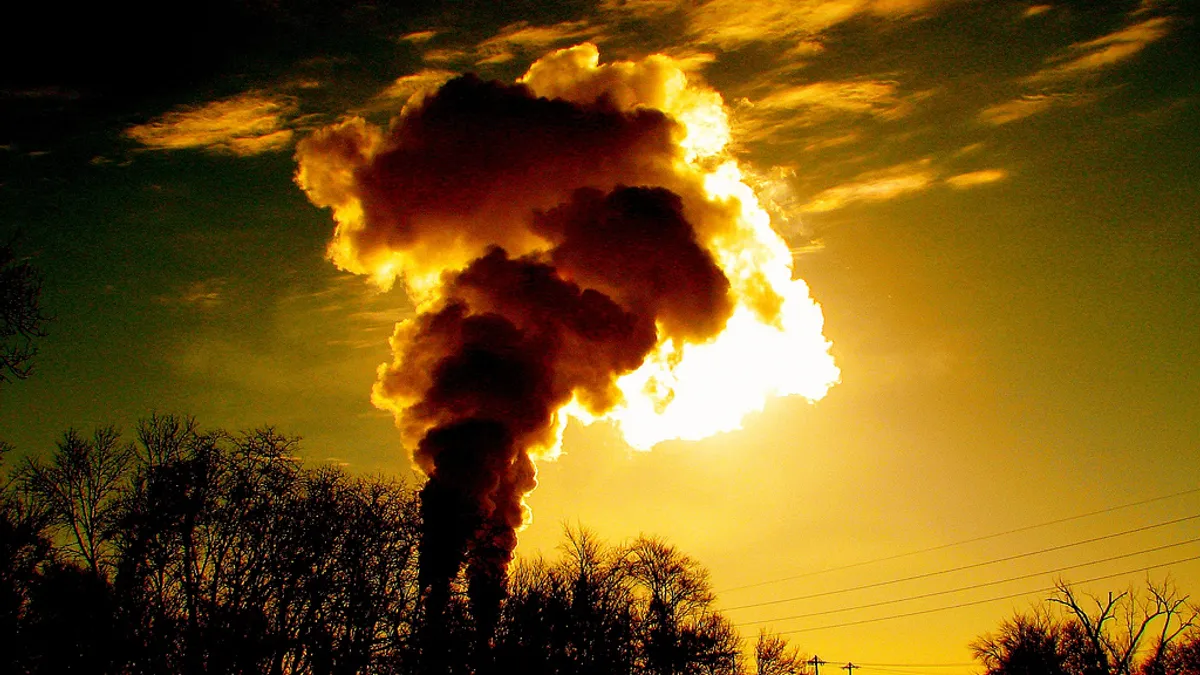Dive Brief:
- Black Hills Energy, dba Cheyenne Light, Fuel and Power, has filed its 2018 Integrated Resource Plan with the Wyoming Public Service Commission (PSC), identifying a 60 MW near-term generation shortfall and proposing the purchase of an affiliate's coal-fired power plant to make it up.
- In a statement, Black Hills attributed the energy shortfall to the expiration of a power purchase agreement at the Wygen I power plant, which is located near Gillette and owned by affiliate Black Hills Wyoming.
- Black Hills said it identified purchasing the mine-mouth coal plant as the least-cost alternative to replace the energy. Its IRP also calls for natural gas, wind and solar resources, including 30 MW of solar development.
Dive Insight:
Wind prices have been falling in the region and other utilities have indicated the renewable resource is undercutting coal fleets. But Black Hills says the purchase of Wygen I, an 85-MW plant built in 2003, is the best decision for its customers.
The plant has "been an extremely reliable and low-cost source of electric capacity and energy for Cheyenne Light since the plant was placed in service," Shirley Welte, Black Hills Energy's vice president of electric and gas operations for Wyoming, said in a statement.
Built 15 years ago, Welte noted the Wygen plant was brought into service before the acquisition of Cheyenne Light by Black Hills in January 2005.
Welte said purchasing the plant would mean "long-term price-stability" that would also "provide stable, long-term mining and plant operations jobs within Wyoming."
The 60 MW generation shortfall shows up in 2022 — representing about 25% of the utility's needs — but Black Hills said over the longer-term, the IRP calls for an additional 30 MW of renewable energy resources, primarily solar, "as the preferred, least-cost option."
The utility says it has submitted the IRP to regulators, but the Wygen I purchase will also require separate approval by the PSC ?? and Federal Energy Regulatory Commission.
Black Hills' proposed acquisition of the plant is notable because other coal-heavy utilities in the region have indicated their coal fleets could be retired.
Just this week, PacifiCorp released analysis that shows 13 of its 22 coal units are more expensive than alternative options, including renewables. A unit-by-unit analysis showed retiring 60% of its units by 2022 would lead to savings.
Xcel Energy, also this week, announced plans to eliminate carbon emissions from its power plants by 2050. In Colorado earlier this year, Xcel revealed wind energy prices that set a new low-price benchmark. And Platte River Power Authority last year began studying the addition of more wind energy.
According to Energy Innovation, "the writing's on the wall for U.S. utilities: Clean energy has rendered coal generation uneconomic." The energy and environmental think tank says the price to build new wind and solar has fallen below the cost of operating existing coal-fired plants. And those calculations are borne out in retirement figures.
According to the Institute for Energy Economics and Financial Analysis, at least 36.7 GW of coal-fired capacity is set to be retired from 2018 through 2024.














